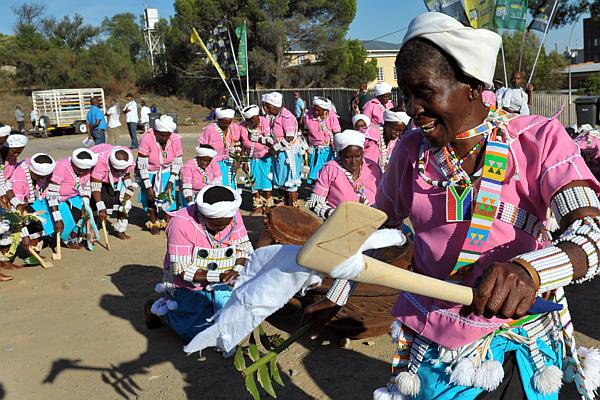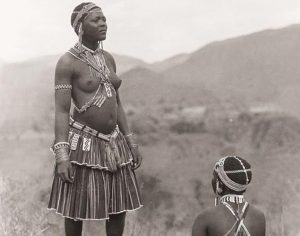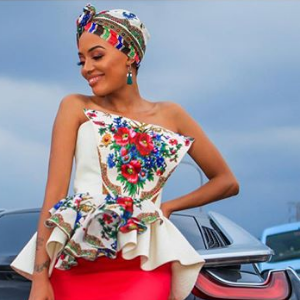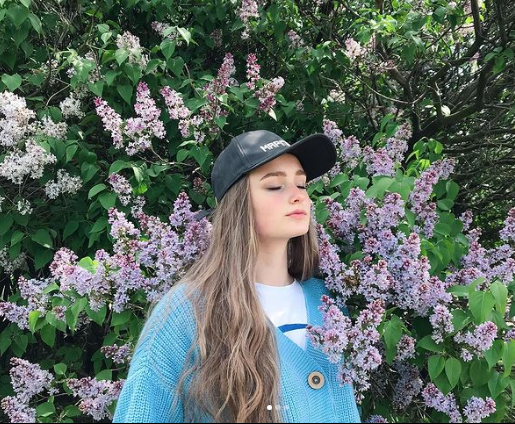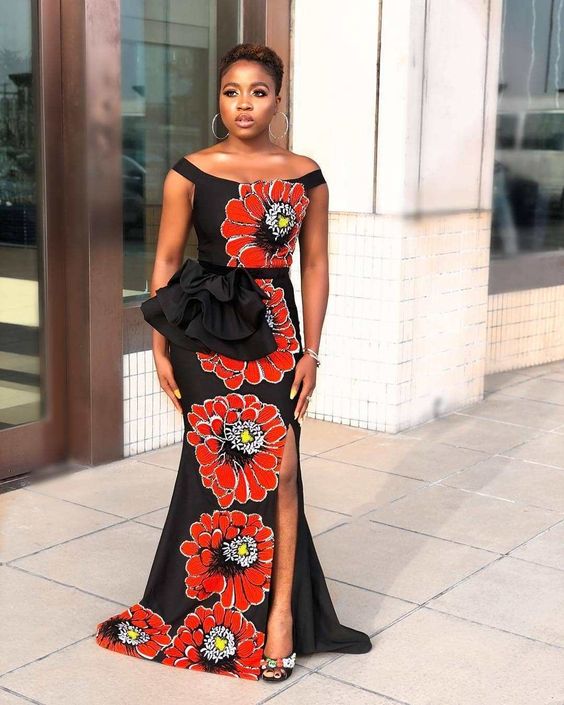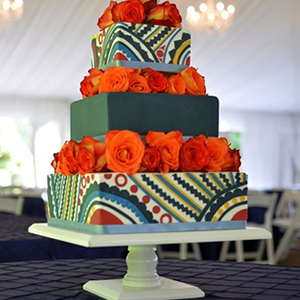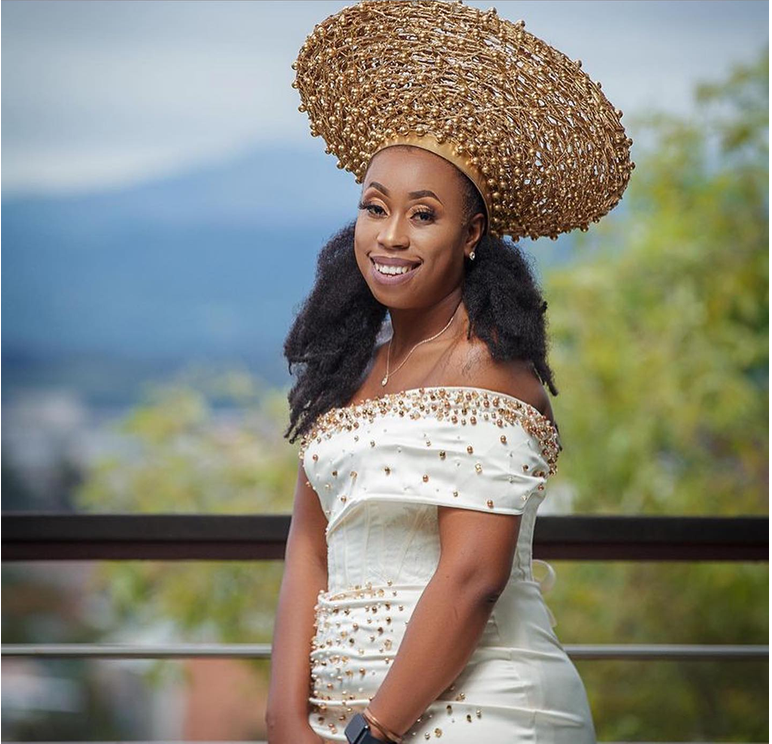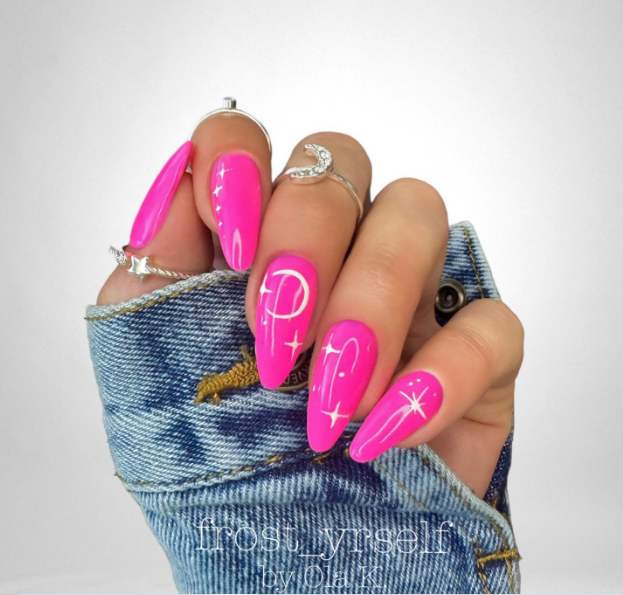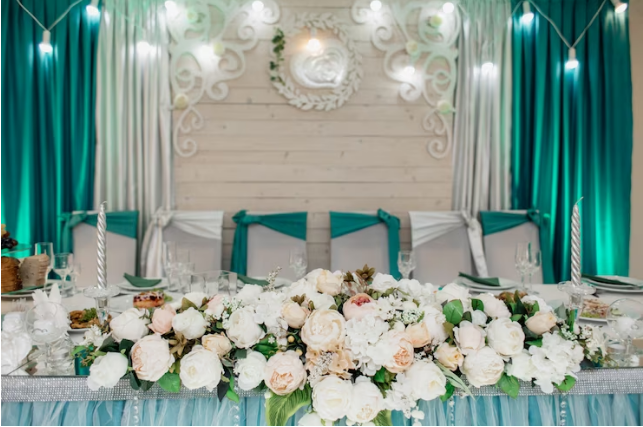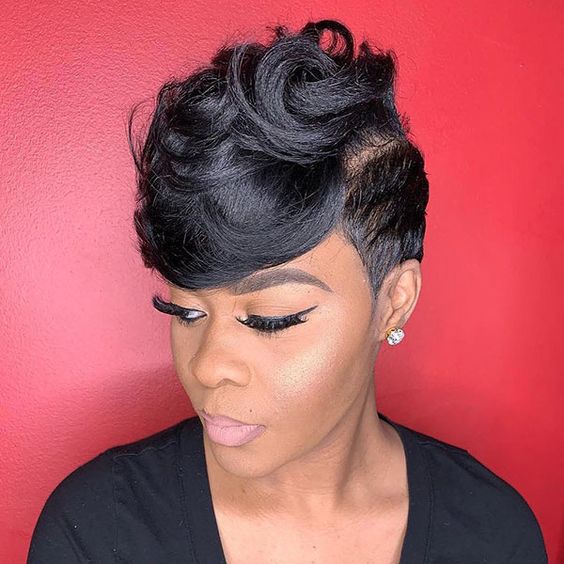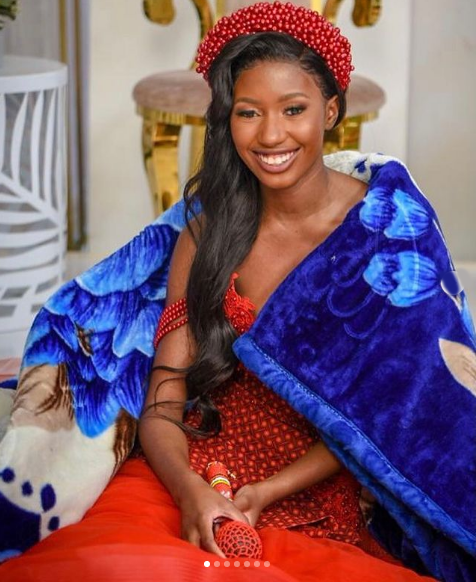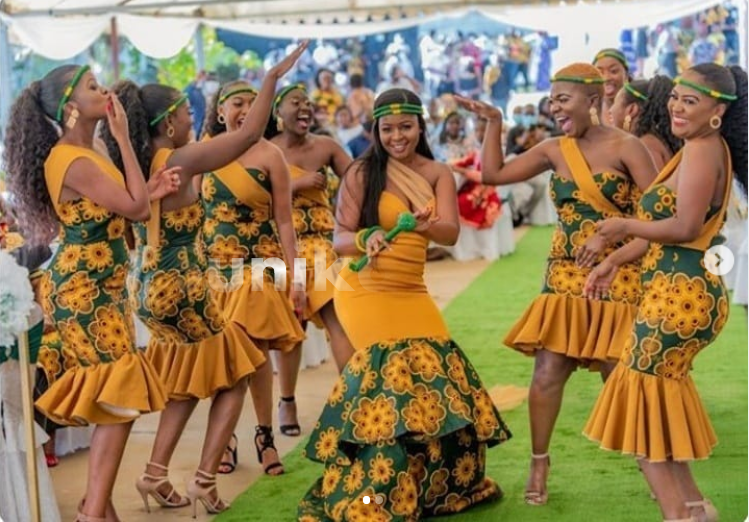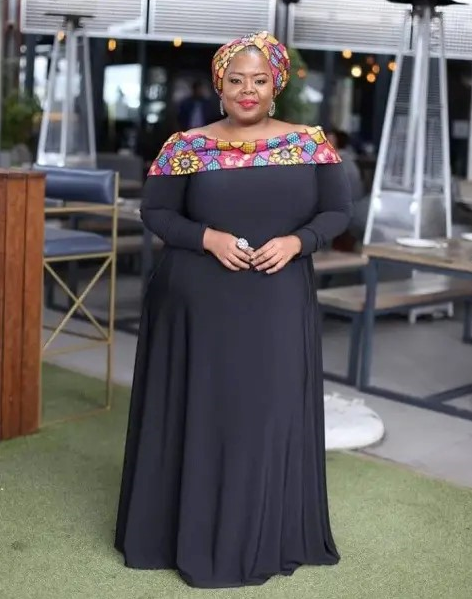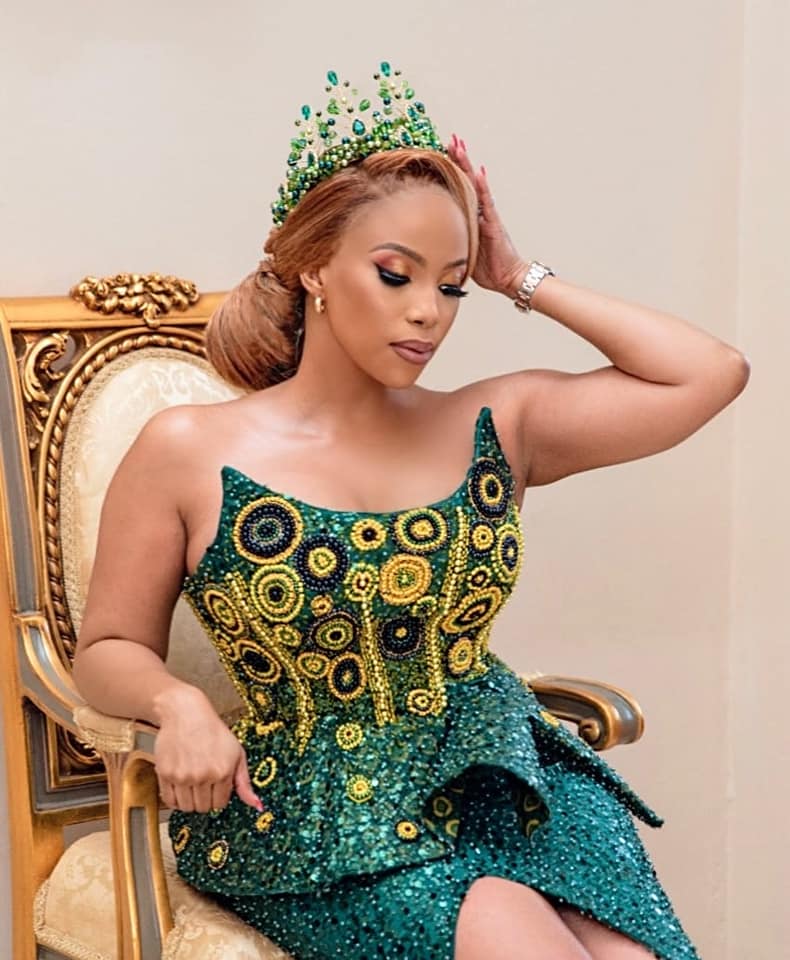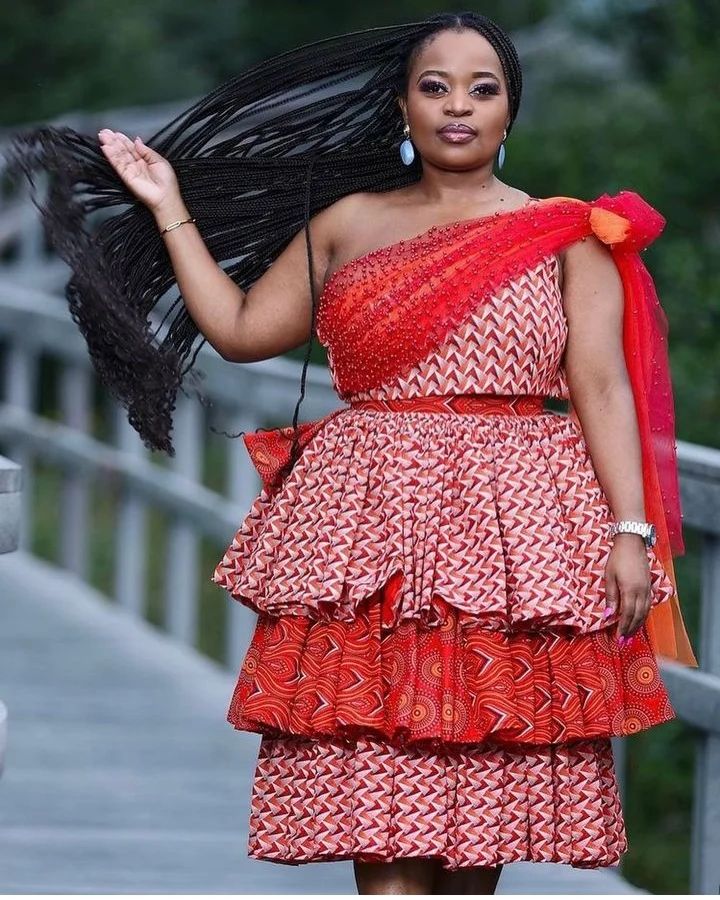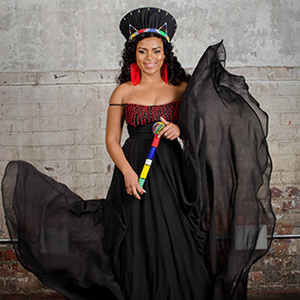
South Africa, a nation known for its diversity and cultural richness, boasts a splendid array of traditional dresses that reflect the vibrant tapestry of its people. These dresses are more than just garments; they are repositories of history, symbols of identity, and artistic expressions. In this article, we delve into the captivating world of traditional dresses in South Africa, exploring their historical roots, cultural significance, and regional variations.
Historical Roots
Traditional dresses in South Africa have deep historical roots, dating back to the indigenous communities that inhabited the region for centuries. Each ethnic group developed distinct dress styles that were influenced by factors such as geography, climate, social structure, and cultural beliefs. With the arrival of European colonists, trade networks, and the blending of cultures, traditional attire began to evolve and adapt to changing times.
Key Elements of Traditional Dresses
-
Fabrics and Materials: Traditional South African dresses feature a rich variety of fabrics and materials that are specific to different cultures and regions. Common materials include animal hides, cotton, silk, and vibrant handwoven fabrics. Animal hides, such as cowhide, are used for Nguni culture's iconic isiNene (loin cloth), while colorful woven fabrics are prominent in the dresses of the Sotho people.
-
Colors and Patterns: Colors and patterns play a vital role in traditional dress. Different communities utilize a dazzling array of colors, often with symbolic meanings. For instance, red may symbolize fertility and passion in Zulu dresses, while black and white patterns in Xhosa dresses are imbued with cultural significance, representing different life stages and events.
-
Beadwork and Embroidery: Beadwork and embroidery are intricate components of South African traditional dresses. Beads are meticulously woven into designs that convey messages, mark social status, or symbolize important life events. The Xhosa dresses, for example, feature beaded panels and intricate geometric patterns, while the Tsonga dresses often incorporate colorful beadwork.
What is the South African Traditional Dress?
The rich cultural diversity in South Africa is beautifully reflected in the wide array of traditional dresses across the country.There are 9 native tribes in South Africa, namely Zulu, Xhosa, Ndebele, Pedi, Tsonga and Shangaan, Venda, Tswana, Swati and Sotho. Each traditional dress carries a cultural significance to a particular tribe. Below is a detailed view of each traditional dress by culture.
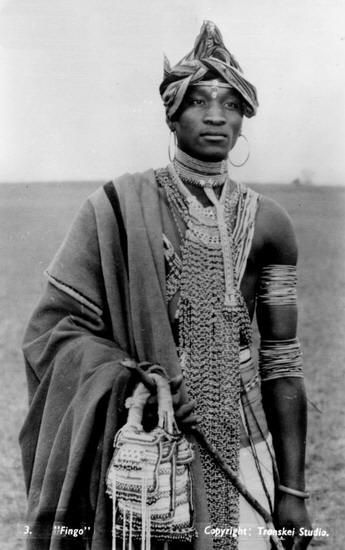 Xhosa Traditional Dresses
Xhosa Traditional Dresses
Xhosa traditional clothing is designed to symbolise a person’s social status: seniority, marital status or if they are the new wife or have had a baby. This is shown in the headdress and dress of the wearer. A long Imibhaco or Isikhakha skirt with no slit in front, together with a marriage bib and two beaded aprons means the wearer is a widow. The more elaborate the headwear, the more senior the wearer. Modern Xhosa Dresses will give a hint of most of the above and carry a bearing to the traditional wear. See modern Xhosa Traditional Dresses
Beadwork has also been a major form of aesthetic expression in traditional Xhosa Clothing for nearly 200 years. The Xhosa peoples have an especially rich tradition of beaded regalia. Read More
Zulu Traditional Dresses
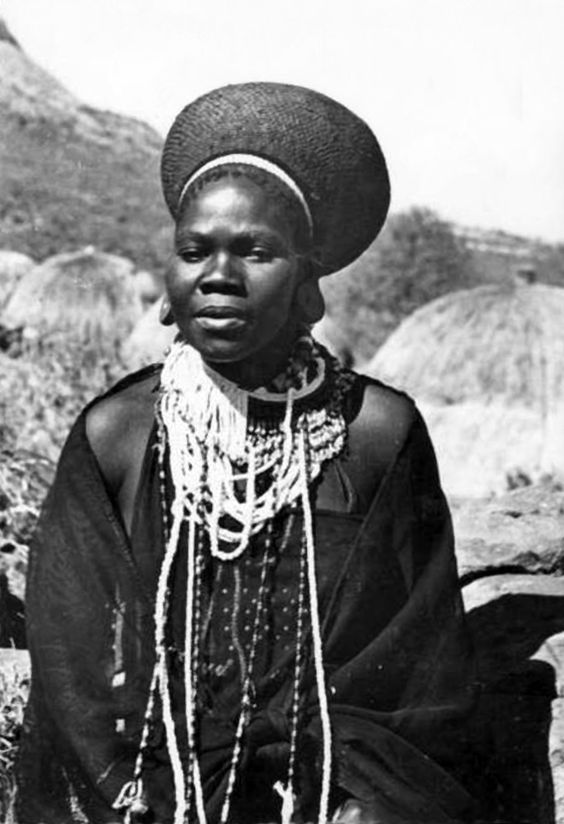 The most prominent adornment in Zulu traditional dresses are iconic circular-shaped hats called izicolo, which are worn by married women. These hats were traditionally made of grass and cotton and measured as much as a metre across to protect the wearer from the sun.
The most prominent adornment in Zulu traditional dresses are iconic circular-shaped hats called izicolo, which are worn by married women. These hats were traditionally made of grass and cotton and measured as much as a metre across to protect the wearer from the sun.
In Zulu culture, women also wear different attire to indicate the different stages of their lives. A single young woman wears her hair short and only a short grass-reed skirt embellished with beads, while engaged women will cover their breasts and grow their hair. The grass reed skirt 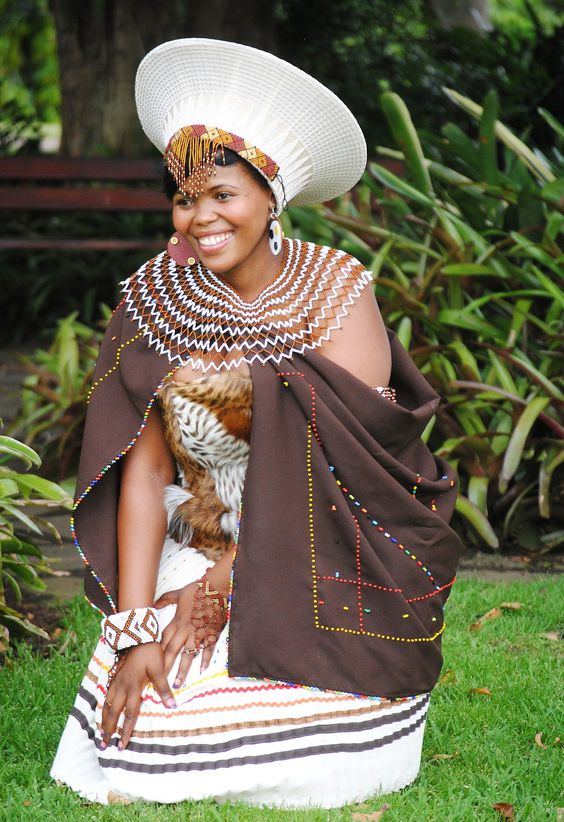 has now been replaced with the common zulu pleated skirts.
has now been replaced with the common zulu pleated skirts.
A married woman is required to cover her entire body to indicate that she is now married and no longer available for potential suitors. She wears a thick cowhide skirt that has been softened with animal fat and charcoal. Traditionally, women covered their bosom with a cloth, but nowadays cotton vests or beaded bras are worn along with colourful beaded necklaces.
The Pedi traditional attire is the most colourful of the South African Traditional Dresses. The rich and vibrant colours represent happiness. Doeks or headscarfs also form part of the clothing.
The traditional SePedi attire included a front apron (ntepa) and back aprons (lebole) for women which were mase from strips of animal skin. These traditional aprons are no longer worn, they have been replaced with modernised waist cloths.
The Sepedi Traditional womens attire comprises of the "hele" (the inner fabric which is tied on the waist) "metsheka" (a cloth tied on the top part of the dress) to match the "moruka"head accessory.
Much like most cultures in South Africa, The Pedi people, are renowned for their bead work designs with rich colours. Traditional outfits for women can range from calf length skirts, pleated blouses and long voluminous dresses. Common designs found on Pedi clothing includes; pleats, embroidery or ribbon trimmings. 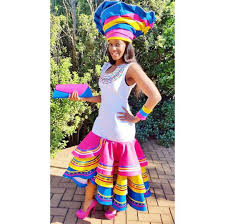
Pedi men wear colourful kilts as part of their traditional attire. It is still not known how these traditional kilts came to be part of the Pedi Traditional Attire formen. Many myths and stories about the origin of these kilts have been shared through folklore. Click here to see Modern Pedi Dresses
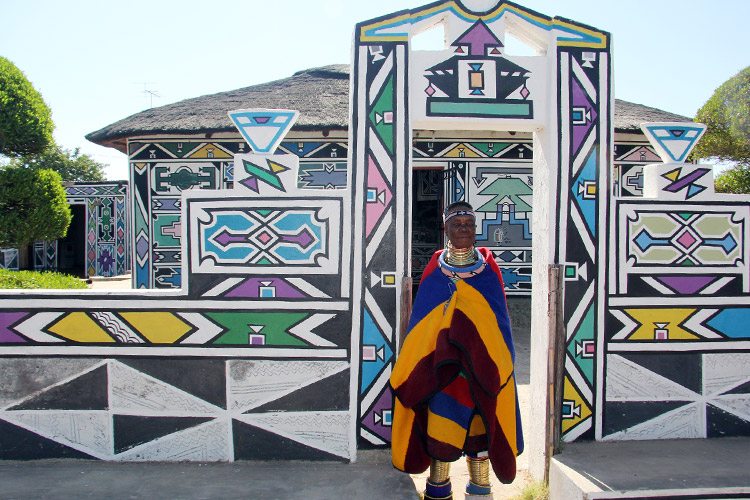 Ndebele Traditional Dresses
Ndebele Traditional Dresses
The main element of Ndebele woman's dress is an apron. Girls wear small front aprons made of tassels and beads which increase in size as the girls grow up. When they reach marriageable age the aprons are replaced by stiff larger ones traditionally made of hardened skin but nowadays of cardboard backed by canvas. These aprons, called iphotho, are lavishly decorated with bead-work in geometric designs.
The Ndebele are popular for the most beautiful house paintings which are very unique. Ndebele patterns are replicated in African Art and design. The paintings have also been incorporated into the Ndebele Traditional Dresses.
A married Ndebele Woman wore "idzila" brass rings around her arms, legs and neck to show her faithfulness to her 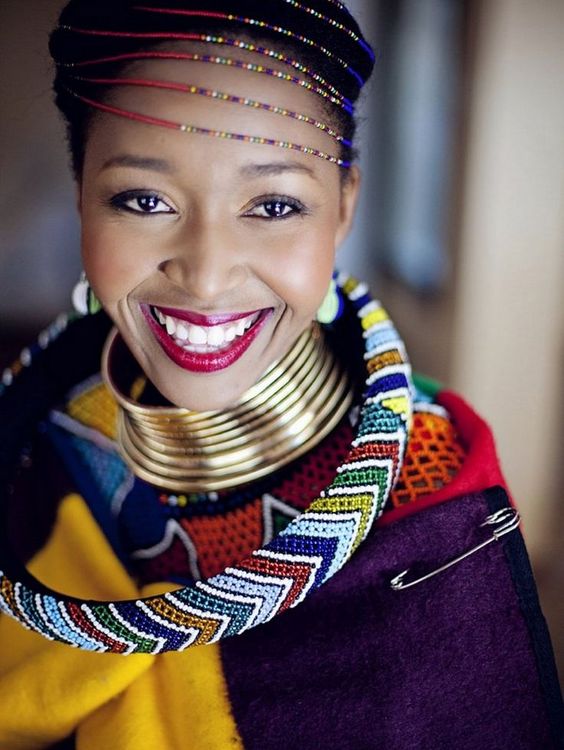 husband. The "Isigolwani" is a beaded neck hoop made of grass and was kept for special occasions.
husband. The "Isigolwani" is a beaded neck hoop made of grass and was kept for special occasions.
It is said that tradition of wearing these beaded rings appeared thanks to the Ndebele men's love for fatter women and the rings function is to imitate rolls of fat. These rings can be pretty wide and the whole set can weigh as much as 25 kg, hence another explanation of the tradition: in earlier times men used to kidnap girls to make them wives often against their wish. The mother of the man then put on those heavy beaded rings on the girl that she could not escape.
A newly married ndebele woman an ijogolo, a five fingured apron to mark the birth of her first child. In addition to the ijogolo, the nguba is a marriage blanket which is worn throughout her lifetime. The blanket is designed with different kinds of beads to signify different event in her life. This can include her sons transition into adulthood, death of a child etc. Click Here to see modern Ndebele Dresses
Tsonga Traditional Dresses
Like all other traditional dresses, the Tsonga traditional dresses have slowly transformed to bright colour prints which are now used in modern sophisticated designs worn by trendy Africans of Tsonga and Shangaan origins. Tsonga Xibelani, Motjeka, Miceka, which is worn together with bangles.
The Traditional Tsonga attire is not complete without a doek (duku), covering your head is a sign of respect mostly if you are the bride at a lobola event..
The purpose of the neckpiece (vuhlalu), is to decorate. It has tiny beads with different shiny colours.
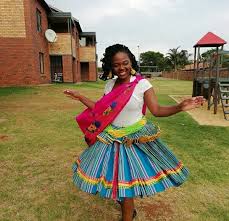
The Xibelani skirt is a compressed pleated skirt with many different colours that are incorporated and embedded through the clothing.
The stomach belt (nkhamu) is also decorated and it has to fit the stomach and has to hold it tight and that significance is mainly for when you dance you are able to move your waist while dancing.
The shirt (yele)- is decorated and you can choose which bindings you would like to have and the colour is really your choice.
To compliment the Tsonga Traditional Attire, the Tsonga people are also known for their distinctive face carving. The face carving ritual started off as slave punishment ushered by slave traders on them and eventually became an element of beauty.
Click Here to see modern Tsonga Dresses
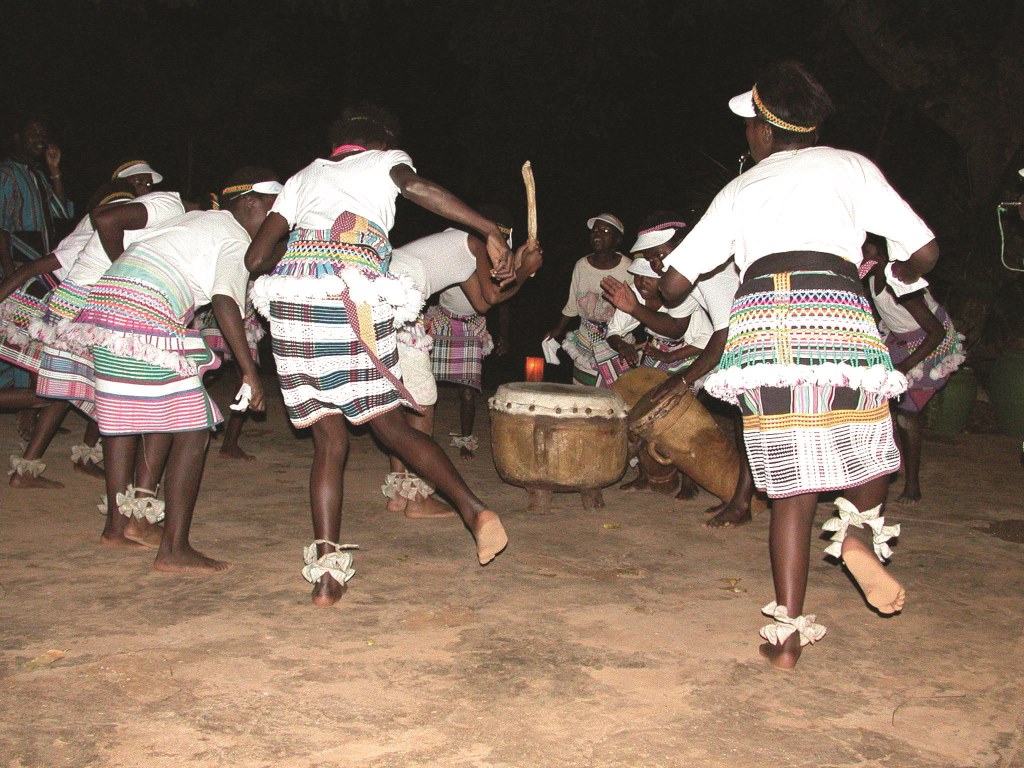 Venda Traditional Dresses
Venda Traditional Dresses
Traditionally Venda clothing was made mainly from skins which were obtained by hunting.
The Vendas believe in the ancestors living with the living, so clothes that are believed to be sacred, represent these ancestors. Around the neck of a Venda lady, a series of beads and amulets may be worn, often very old, each of which is associated with an ancestral spirit. These are passed down through generations as sacred trust and to part with one is to risk immediate retribution from the ancestral realm.
The traditional garment worn by married women, is a goat skin apron called tshirivha, 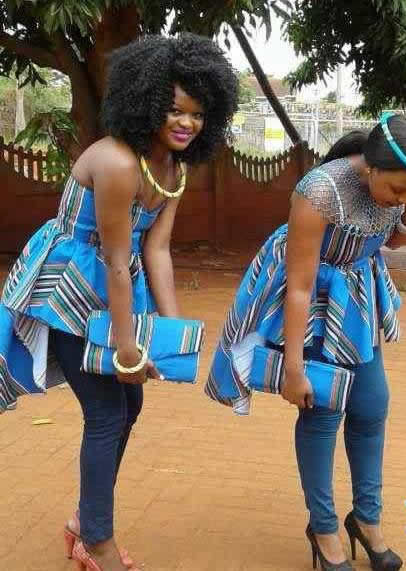 covering the back and front. On special occasions, married women used to wear a ceremonial back apron made of sheepskin called gwana. Today, a similar garment is made of 'wenda cloth. Maredo, worn by young females, are narrow strips of cloth hanging between the legs over a girdle in the front and back. Bracelets and necklaces of twisted grass called vhukunda were worn by females for decoration. Young women also wore pieces of copper twisted round a string of cotton, called thuthu or shedo, round the ankles and wrists.
covering the back and front. On special occasions, married women used to wear a ceremonial back apron made of sheepskin called gwana. Today, a similar garment is made of 'wenda cloth. Maredo, worn by young females, are narrow strips of cloth hanging between the legs over a girdle in the front and back. Bracelets and necklaces of twisted grass called vhukunda were worn by females for decoration. Young women also wore pieces of copper twisted round a string of cotton, called thuthu or shedo, round the ankles and wrists.
Modern Venda dresses are created with the Venda prints either using just a strip or the whole garment can be designed using the Venda Print Fabric.
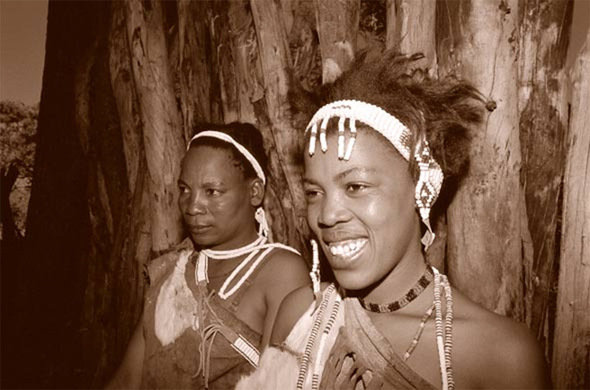
Tswana Traditional Dresses
The Traditional Tswana attire is a mix of Western-style or Victorian Era dresses with the pieces of clothing that are pure Tswana. The Tswana traditionally used a blanket made of animal skin, with the era of cotton cloth coming into Africa, the women wore skirts and tied materials 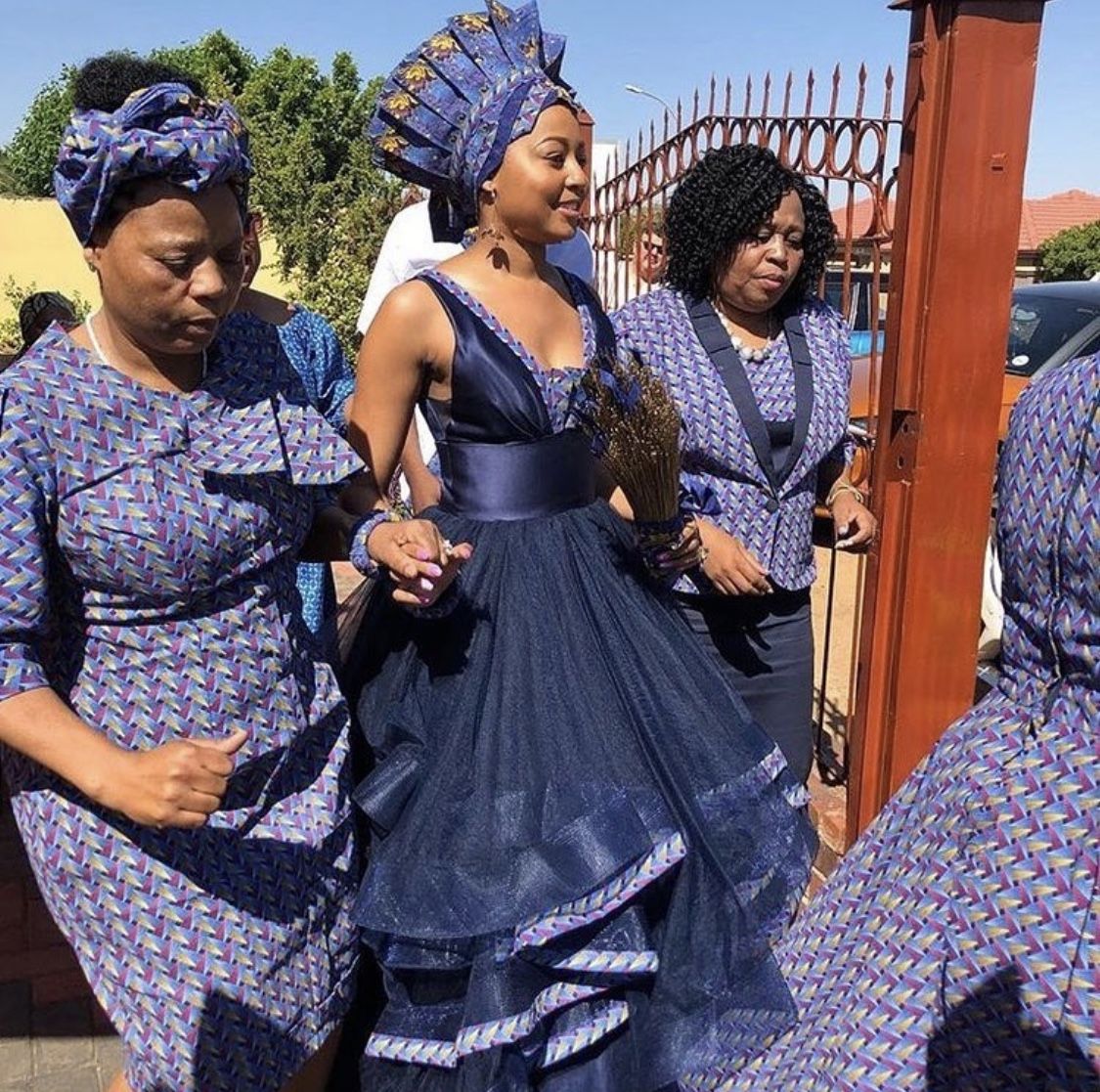 across the breasts while the men also use the same material but only cover their bodies from the waist downwards.
across the breasts while the men also use the same material but only cover their bodies from the waist downwards.
Most of the traditional Tswana clothing culture quickly was lost to mordernisation. Traditional attire for marriage ceremonies have been completely lost and the dresses used today are those used in modern marriages. Many of the cultural Tswana Traditional Dresses were formed under the influence of colonizers and missionaries who appeared in Botswana in 19-20th centuries.
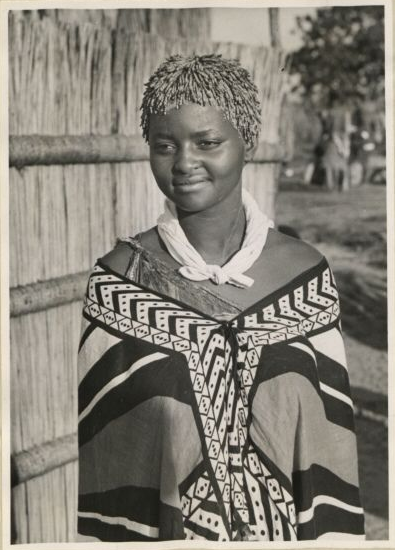
Swazi Traditional Dresses
The Swati tribe was named after king Swati II who became King in 1839 . The Swati traditional attire has either a colourful spear, an animal or the face or the reigning King Mswati. Married women cover their upper torsos and sometimes wear traditional "beehive" hairstyles. Single women sometimes wear only beads over their upper torsos, particularly on ceremonial occasions. Men's traditional clothing consists of a colorful cloth "skirt" covered by a leather apron (emajobo). Adornments on ceremonial occasions include the neckband (igcebesha ), tie (umgaco), and walking stick (sagibo). Royalty wear red feathers (ligwalagwala). Women's traditional clothing consists of an ilihhiya cloth.
Female children age between 3 - 8 years old strings of beads and skirt of grass or cloth, 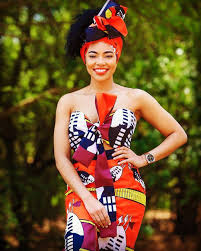 males wear loin skin
males wear loin skin
Teenagers and unmarried adult females wear skirts of grass or skirt and short toga of cloth, never long; beads and necklaces, males wear loin skins and cloth, bead ornaments
newly-wed females wear askin apron and skin skirt, apron worn under the armpits; after birth of first child, raises apron over one shoulder; hair in a bun.
Aged male Swatis wear loin cloths a head ring, and grandmothers wear goatskin, cloths and a hair in bun.
Click here to see modern Swati Dresses
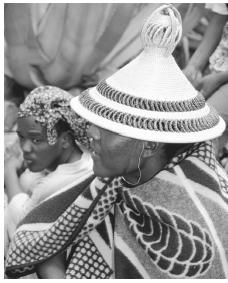 Sotho Traditional Dress
Sotho Traditional Dress
The Traditional Sotho Attire will usually comprise of a blanket infact, Sotho people are also well known for wearing their colourful blankets often used instead of jackets. It is said the origin of the Basotho blanket began somewhere in 1860, King Moshoeshoe I, the founder of Lesotho, was given a wool blanket as a gift. The King loved the blanket so much, he abandoned his traditional leopard-skin kaross in favour of the blanket.
The Basotho hat (mokorotlo) is the iconic BaSotho traditional item of clothing worn to this day. The conical woven hat with a top knot is made of local mosa grass and can be seen and purchased all across the nation. The is also the national symbol and can be found on the Mountain Kingdom’s flag.
The Basotho people soon followed suit and to this day Sotho Blanket, ‘Seanamarena’ in Sesotho, has become an inherent part of their Sotho Tradition and culture. Sotho blankets come in a wide range of colours and patterns at all important life events, from marriage to childbirth to the coronation of kings.
In Lesotho, the Sotho tribal blanket is 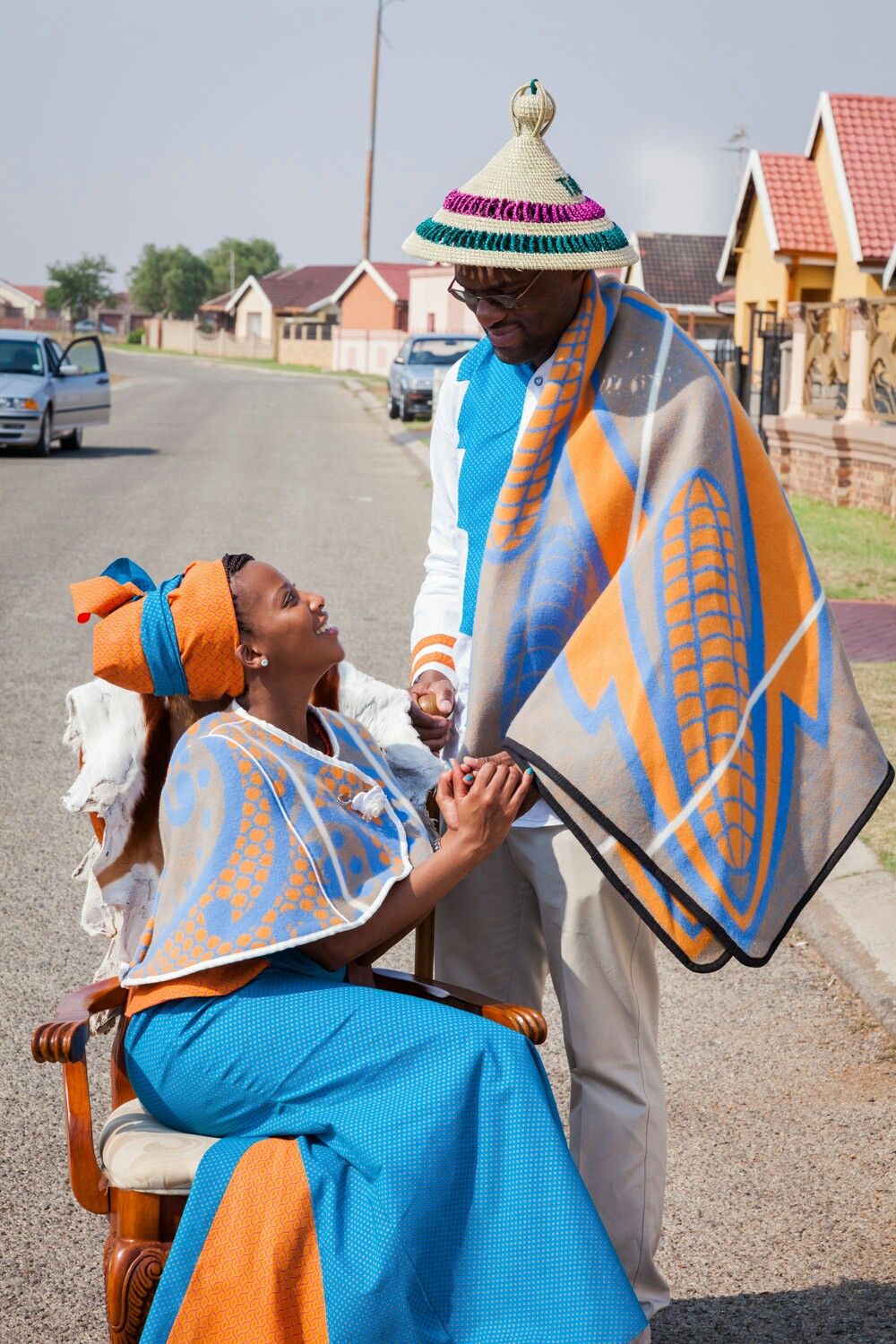 worn in every day life by herd boys, grannies and even children to keep warm. Lesotho is the only nation south of the Sahara that identifies the culture of an entire country through a nationalistic article of clothing like the Basotho blanket.
worn in every day life by herd boys, grannies and even children to keep warm. Lesotho is the only nation south of the Sahara that identifies the culture of an entire country through a nationalistic article of clothing like the Basotho blanket.
Women usually wear long traditional Basotho dress called the seshoeshoe. Seshoeshoe are worn in endless varieties of designs, patterns and colours. Wearers purchase seshoeshoe fabric and then work with a seamstress to create their preferred design. Seshoeshoe dresses and skirts are sometimes worn with blankets around their waists, and for special occasions like church or weddings
Click here to see modern Sotho Dresses
Cultural Significance and Identity
Traditional dresses in South Africa are not merely clothing; they are powerful symbols of cultural identity, heritage, and pride. They are worn with deep reverence during important life events such as weddings, initiation ceremonies, and other traditional celebrations. These dresses serve as a means of connecting with ancestral roots and passing down cultural traditions to future generations.
In recent years, there has been a resurgence of interest in South African traditional dresses. Many people, both within South Africa and globally, have come to appreciate and celebrate these garments as an art form, a symbol of diversity, and a source of inspiration for contemporary fashion.
Conclusion
South African traditional dresses are a mesmerizing reflection of the country's rich cultural diversity and heritage. These dresses embody centuries of tradition, artistic expression, and cultural pride. As South Africa continues to celebrate its history and diversity, traditional dresses remain a vibrant and essential part of the nation's cultural mosaic, reminding us of the enduring beauty and significance of tradition in an ever-changing world.
